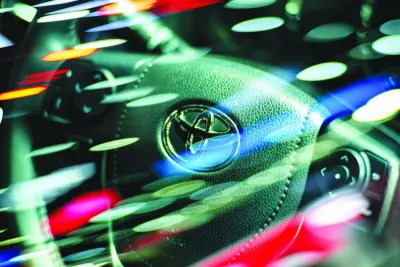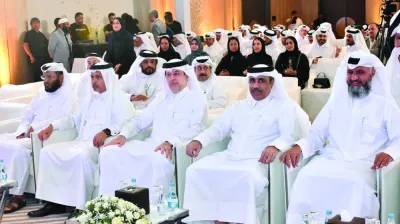Japanese Prime Minister Fumio Kishida said yesterday that his government has not yet decided when to begin releasing treated water from the crippled Fukushima nuclear plant into the Pacific Ocean.
Media reports suggest that the discharge of some of the 1.34mn tonnes of water, which Japan insists is safe, could begin as soon as this month, despite anger from China and concern elsewhere.
Speaking at the Fukushima site, wrecked by a tsunami in 2011 in one of the world’s worst atomic accidents, Kishida said he would first meet fishing industry officials to discuss their concerns.
“I must refrain from commenting on a concrete timing of the release into the ocean at this point, as the decision has to be made after the government as a whole looks at measures to do with safety and reputational damage (for the fishing industry),” Kishida told reporters.
“I hope to meet with fishermen, led by chairman (Masanobu) Sakamoto of Japan’s fisheries co-operative federation, as early as tomorrow,” the prime minister said.
Getting the tacit approval of organisations representing the fisherman is considered the final hurdle for the plan to release the treated waste water.
Many Japanese fishermen are against the release, fearing that it will undo years of efforts to improve the industry’s image in the wake of the 2011 catastrophe.
Kishida said his government would make every effort to ensure the safety of the water release and counter reputational damage.
Releasing the water is a key step in decommissioning the Fukushima Daiichi plant and revitalising Fukushima, he added.
The water, equivalent to more than 500 Olympic swimming pools, has accumulated in the past 12 years from water used to cool three melted-down reactors combined with groundwater and rain.
Plant operator Tepco says that dangerous radioactive elements have been filtered out and that the water it plans to release is safe, a view backed by the UN atomic agency.
Japan has spent months trying to win over public opinion, with everything from livestreaming fish living in the treated water to countering online disinformation.
Public concern about the plan remains high in South Korea but its government said its review of the plan found it in line with international standards.
However, China, which has frosty relations with Japan, has banned food imports from 10 Japanese prefectures and has imposed stringent radiation tests on food from the rest of the country.
The release of the treated water – a maximum of 500,000 litres per day, Tepco says – is just one stage of the clean-up.
The far more dangerous task remains of removing radioactive debris and highly dangerous nuclear fuel from the three reactors that went into meltdown.
Tepco has been filtering the contaminated water to remove radioactive isotopes, leaving only hard-to-remove tritium.
The company will dilute the water to get the tritium below regulatory limits before pumping it into the ocean from a coastal site.
Japan’s nuclear regulator approved the plan after it got the nod last month from the International Atomic Energy Agency (IAEA), which had conducted a two-year evaluation.

Prime Minister Kishida (second left) during his tour of the Advanced Liquid Processing System (ALPS) at the Tokyo Electric Power Company Holdings (Tepco) Fukushima Daiichi nuclear power plant in Fukushima Prefecture.

Right: This long exposure picture shows a damaged house (front) with the facilities of Tokyo Electric Power Company Holdings (Tepco) Fukushima Daiichi nuclear power plant (back), seen from Ukedo fishing port in Namie, Fukushima prefecture.


